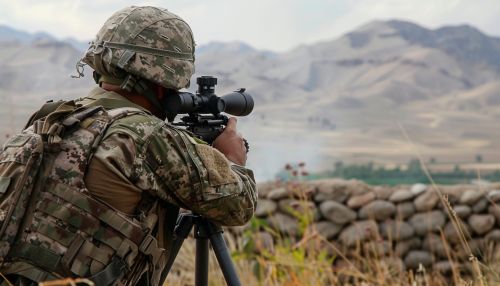Counter-sniper tactics
Introduction
Counter-sniper tactics are a set of techniques used in military and law enforcement contexts to engage and neutralize an enemy sniper. These tactics are crucial in minimizing the damage inflicted by a sniper, and can involve a combination of detection, concealment, deception, and suppression strategies.


Detection
The first step in counter-sniper tactics is the detection of the sniper. This involves identifying the location of the sniper, usually through the use of spotting scopes, radar systems, and acoustic location devices. These tools can help determine the direction of the sniper's shot, allowing for a more accurate identification of their position.
Concealment
Once the sniper's location has been identified, the next step is to conceal one's own position. This can be achieved through the use of camouflage, smoke screens, and other forms of cover. The goal is to make it difficult for the sniper to spot their target, thereby reducing their effectiveness.
Deception
Deception is another important aspect of counter-sniper tactics. This can involve the use of decoys and other forms of misdirection to confuse the sniper and draw their fire away from the intended target. For example, a team might deploy a dummy in an exposed position to trick the sniper into revealing their location.
Suppression
Once the sniper's position has been identified and one's own position has been concealed, the final step is to suppress the sniper. This involves the use of suppressive fire to keep the sniper pinned down and unable to accurately return fire. This can be achieved through the use of machine guns, mortars, and other high-volume fire weapons.
